The endogenous selective estrogen receptor modulator 27-hydroxycholesterol is a negative regulator of bone homeostasis
- PMID: 20501668
- PMCID: PMC2940523
- DOI: 10.1210/en.2010-0080
The endogenous selective estrogen receptor modulator 27-hydroxycholesterol is a negative regulator of bone homeostasis
Abstract
Osteoporosis is an important clinical problem, affecting more than 50% of people over age 50 yr. Estrogen signaling is critical for maintaining proper bone density, and the identification of an endogenous selective estrogen receptor (ER) modulator, 27-hydroxycholesterol (27HC), suggests a mechanism by which nutritional/metabolic status can influence bone biology. With its levels directly correlated with cholesterol, a new possibility emerges wherein 27HC links estrogen and cholesterol signaling to bone homeostasis. In these studies, we found that increasing concentrations of 27HC, both by genetic and pharmacological means, led to decreased bone mineral density that was associated with decreased bone formation and increased bone resorption. Upon manipulation of endogenous estrogen levels, many of the responses to elevated 27HC were altered in such a way as to implicate ER as a likely mediator. In a model of postmenopausal bone loss, some pathologies associated with elevated 27HC were exacerbated by the absence of endogenous estrogens, suggesting that 27HC may act both in concert with and independently from classic ER signaling. These data provide evidence for interactions between estrogen signaling, cholesterol and metabolic disease, and osteoporosis. Patients with high cholesterol likely also have higher than average 27HC, perhaps putting them at a higher risk for bone loss and fracture. More studies are warranted to fully elucidate the mechanism of action of 27HC in bone and to identify ways to modulate this pathway therapeutically.
Figures

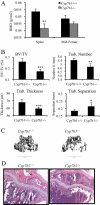
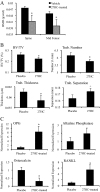
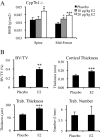
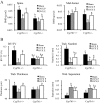

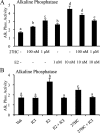
Comment in
-
Bone: High 27-hydroxycholesterol decreases BMD.Nat Rev Endocrinol. 2010 Sep;6(9):474. doi: 10.1038/nrendo.2010.112. Nat Rev Endocrinol. 2010. PMID: 20803803 No abstract available.
Similar articles
-
27-Hydroxycholesterol, an endogenous selective estrogen receptor modulator.Maturitas. 2017 Oct;104:29-35. doi: 10.1016/j.maturitas.2017.07.014. Epub 2017 Jul 31. Maturitas. 2017. PMID: 28923174 Free PMC article. Review.
-
The cholesterol metabolite 27-hydroxycholesterol promotes atherosclerosis via proinflammatory processes mediated by estrogen receptor alpha.Cell Metab. 2014 Jul 1;20(1):172-82. doi: 10.1016/j.cmet.2014.05.013. Epub 2014 Jun 19. Cell Metab. 2014. PMID: 24954418 Free PMC article.
-
27-Hydroxycholesterol promotes cell-autonomous, ER-positive breast cancer growth.Cell Rep. 2013 Nov 14;5(3):637-45. doi: 10.1016/j.celrep.2013.10.006. Epub 2013 Nov 7. Cell Rep. 2013. PMID: 24210818 Free PMC article.
-
27-Hydroxycholesterol is an endogenous SERM that inhibits the cardiovascular effects of estrogen.Nat Med. 2007 Oct;13(10):1185-92. doi: 10.1038/nm1641. Epub 2007 Sep 16. Nat Med. 2007. PMID: 17873880
-
Our evolving understanding of how 27-hydroxycholesterol influences cancer.Biochem Pharmacol. 2022 Feb;196:114621. doi: 10.1016/j.bcp.2021.114621. Epub 2021 May 24. Biochem Pharmacol. 2022. PMID: 34043965 Free PMC article. Review.
Cited by
-
The role of mitochondrial dysfunction in age-related diseases.Biochim Biophys Acta. 2015 Nov;1847(11):1387-400. doi: 10.1016/j.bbabio.2015.05.021. Epub 2015 Jun 4. Biochim Biophys Acta. 2015. PMID: 26050974 Free PMC article. Review.
-
Influence of Cholesterol on the Regulation of Osteoblast Function.Metabolites. 2023 Apr 21;13(4):578. doi: 10.3390/metabo13040578. Metabolites. 2023. PMID: 37110236 Free PMC article. Review.
-
27-Hydroxycholesterol, an endogenous selective estrogen receptor modulator.Maturitas. 2017 Oct;104:29-35. doi: 10.1016/j.maturitas.2017.07.014. Epub 2017 Jul 31. Maturitas. 2017. PMID: 28923174 Free PMC article. Review.
-
Nuclear receptor LRH-1 induces the reproductive neuropeptide kisspeptin in the hypothalamus.Mol Endocrinol. 2013 Apr;27(4):598-605. doi: 10.1210/me.2012-1371. Epub 2013 Mar 15. Mol Endocrinol. 2013. PMID: 23504956 Free PMC article.
-
Human cytochrome P450 enzymes 5-51 as targets of drugs and natural and environmental compounds: mechanisms, induction, and inhibition - toxic effects and benefits.Drug Metab Rev. 2018 Aug;50(3):256-342. doi: 10.1080/03602532.2018.1483401. Drug Metab Rev. 2018. PMID: 30717606 Free PMC article. Review.
References
-
- Björkhem I, Cedazo-Minguez A, Leoni V, Meaney S 2009 Oxysterols and neurodegenerative diseases. Mol Aspects Med 30:171–179 - PubMed
-
- Olkkonen VM, Lehto M 2004 Oxysterols and oxysterol binding proteins: role in lipid metabolism and atherosclerosis. Ann Med 36:562–572 - PubMed
-
- Javitt NB 2002 25R,26-Hydroxycholesterol revisited: synthesis, metabolism, and biologic roles. J Lipid Res 43:665–670 - PubMed
-
- Brown AJ, Jessup W 1999 Oxysterols and atherosclerosis. Atherosclerosis 142:1–28 - PubMed

